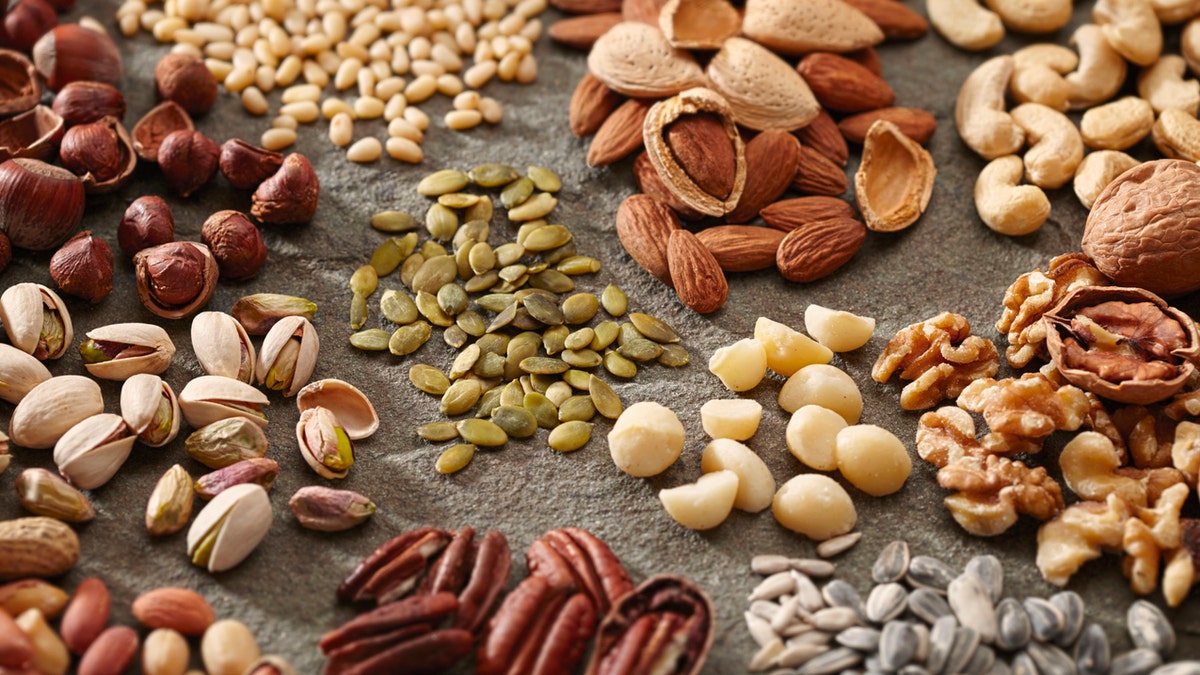
Almost three in 100 Australian children have a peanut allergy, and only 20 percent of children outgrow the allergy, according to Allergy & Anaphylaxis Australia. (iStock)
An Australian woman has shared the shocking reality of what it’s like to fly with an airborne allergy as she calls on passengers to stop supporting the sale of nut products on flights.
Em Lee posted photos of what she believed was a reaction to nut residue left on a plane seat or tray table that she possibly touched or inhaled during a domestic flight over the weekend.
Lee said her children were “terrified” she would die during her episode, though she deemed it to be only a “minor” reaction.
But she used her frightening experience to remind all plane passengers that nut products, which have long been popular snacks on flights, had the potential for much worse.
“Having a life-threatening airborne allergy is like boarding a plane and enduring the whole flight with a person holding a loaded gun to your head. It is horrible,” Lee said.
“This also affects my children emotionally in a huge way. They were so traumatized thinking I would die on last night’s plane, despite me calmly reassuring them the whole time. They are terrified.”
Almost three in 100 Australian children have a peanut allergy, and only 20 percent of children outgrow the allergy, according to Allergy & Anaphylaxis Australia.
Allergies to tree nuts, which include almonds, walnuts, macadamias, pine nuts and many others, are also prevalent in Australia, which has among the highest rate of food allergies in the world.
And for those with airborne allergies, it’s not enough to avoid eating or touching a particular product — the reaction happens when sufferers breathe in the allergen, which can be extremely difficult to avoid.
Lee said while the number of people who had potentially life-threatening airborne allergies was very small, she wanted to see fewer airborne allergens served in confined spaces, like plane cabins.
“Long-haul flights are the worst, where I need to carry my own tracheostomy kit in case I need to perform my own surgical airway,” she said.
“There aren’t too many airborne allergens that are this severe/life-threatening, and also common. I wish there was a way to avoid it to at least some degree.
“Of course I can and do avoid environments where nuts are present, and there are usually hospitals and paramedics with appropriate medication if required available. Being in the air is a completely different ball game.”

Allergies to tree nuts, which include almonds, walnuts, macadamias, pine nuts and many others, are also prevalent in Australia, which has among the highest rate of food allergies in the world. (iStock)
She said it appeared important “people aren’t being withheld from their rights to be served nuts on planes … a super important snack they couldn’t possibly go without.”
“Thanks society for pushing for your rights to be served nuts on aeroplanes, and thank you to the airlines who insist that they will never reconsider this snack option due to high demand,” she said.
While airlines continued to serve nut products on planes — which are difficult for people with airborne allergies to avoid — other passengers could do their part to help, Lee said.
“Please avoid bringing nuts on planes, or purchasing them,” she said, pointing out supply equals demand.
“If demand stops, they may be more receptive to taking them off the menu.
“Be supportive of those living with this. It truly is an insanely traumatic thing to live with!”
In the meantime, Lee used her post on Facebook to share flying tips for people with potentially life-threatening airborne allergies — and the list is exhausting.
She said: “Take antihistamines before and during flights. Pack at least 3 EpiPens. Advise airline in advance — twice — and document who you spoke to. Ask flight crew to request that passengers avoid eating nuts during the flight. Ask crew not to serve nuts on plane. Wipe down seat and tray with disposable antibacterial wipes (or get a partner or crew member to do this if possible). Pack a dust/gas mask. Pack an emergency kit for the plane to hold for you (they don’t allow it on normally due to liquid and sharps restrictions). Kit should include at least 5x 1mg ampoules of adrenaline, hydrocortisone, ventolin, intramuscular needles, cannula, glucagon (for those on beta blockers), sodium chloride (fluids), and a full tracheostomy kit. Then hope there’s a doctor on board who can perform all of this in under 20 minutes!”
She also said people with airborne allergies should get a letter from their GP explaining the need for all that equipment on board.
“The emergency kit can be in the care of flight crew at all times to maximize safety for other passengers,” she said.
Continue reading the original article: This is what it looks like when nuts are served on planes on news.com.au.




















